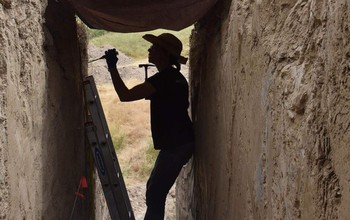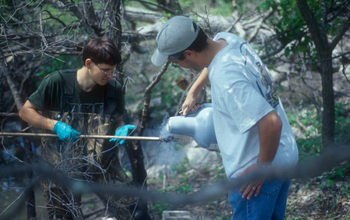All Images
News Release 17-092
NSF issues new EPSCoR awards, investing in science and engineering across nation
5 states receive awards for building research capacity and education
This material is available primarily for archival purposes. Telephone numbers or other contact information may be out of date; please see current contact information at media contacts.

Naomi Ward, University of Wyoming associate professor of molecular biology, collects soil samples for microbiome analysis at the LaPrele Creek mammoth kill site near Douglas, Wyoming. Sampling of Wyoming soil, plants, water and air will be done at hundreds of sites across the state as part of the university's major study of microbial life over the next five years.
Crater Lake in the Medicine Bow National Forest is one of the hundreds of Wyoming sites where soil, plant, water and air samples will be taken for microbial analysis.
Credit: University of Wyoming
Download the high-resolution JPG version of the image. (507.8 KB)
Use your mouse to right-click (Mac users may need to Ctrl-click) the link above and choose the option that will save the file or target to your computer.

Researchers from Kansas State University and University of Kansas use liquid nitrogen to freeze a core of stream sediment collected from Kings Creek at Konza Prairie Biological Station. The core was sectioned and used to analyze genes of nitrogen cycling organisms from the stream sediment microbiome. The method is unofficially referred to as the "Popsicle method" because the copper tube is inserted into the sediment and liquid nitrogen poured into the tube to freeze the sediment in a shell around the tube.
Credit: Walter Dodds, Kansas State University
Download the high-resolution JPG version of the image. (2.2 MB)
Use your mouse to right-click (Mac users may need to Ctrl-click) the link above and choose the option that will save the file or target to your computer.
